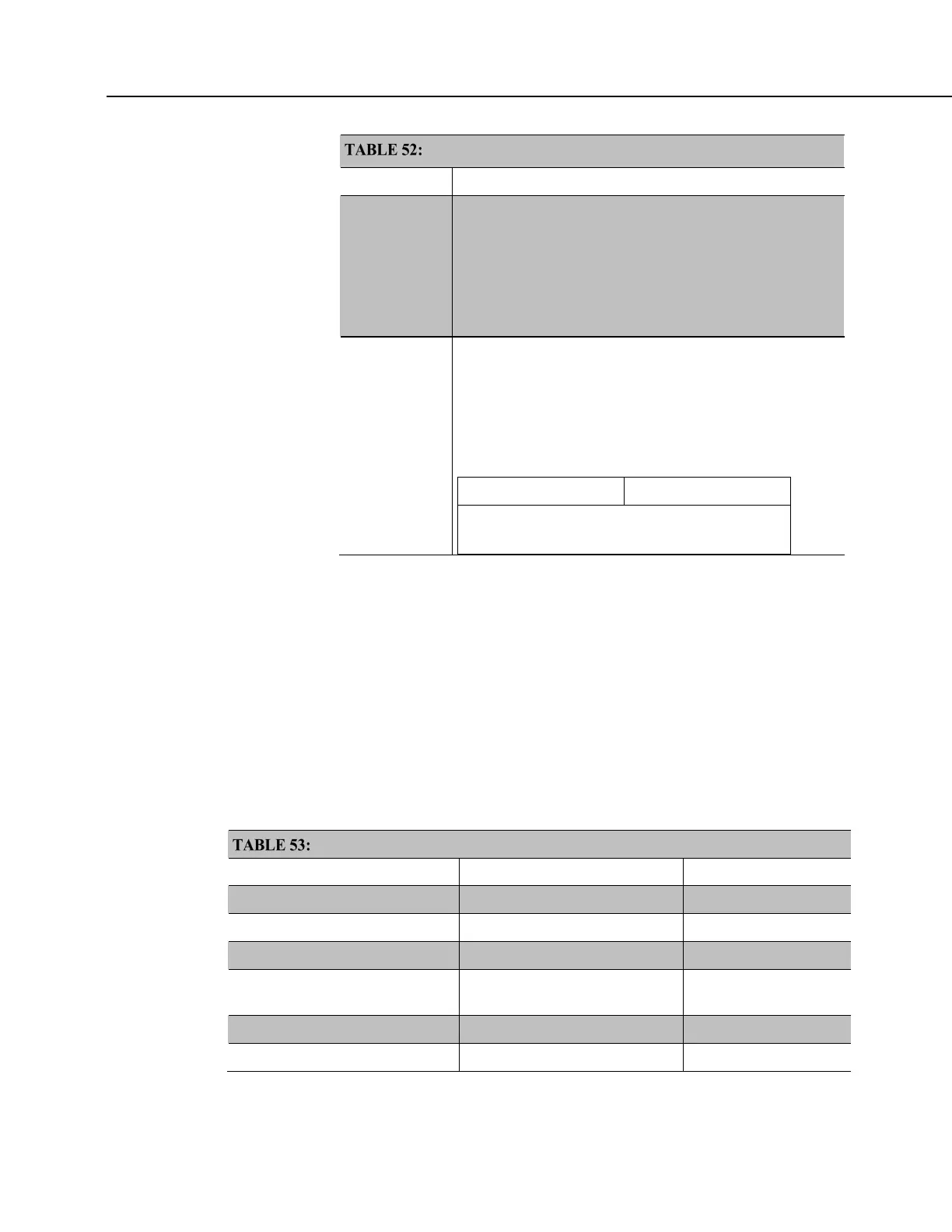Section 7. Installation
String Operators
Operator Description
Difference between e and c
"abe" - "abc" = 2
Difference between c and b
"ace" - "abe" = 1
Difference between d and NULL
"abcd" - "abc" = 100
<, >, <>, <=,
>=, =
ASCII codes of the first characters in each string are
compared. If the difference between the codes is zero, codes
for the next characters are compared. When unequal codes
or NULL are encountered (NULL terminates all strings), the
requested comparison is made. If the comparison is true, -1
or True is returned. If false, 0 or False is returned.
Examples:
Expression Result
x = "ace" > "abe" x = -1 or True
7.7.18.2 String Concatenation
Concatenation is the building of strings from other strings ("abc123"), characters
("a" or chr()), numbers, or variables. The table String Concatenation Examples
(p. 304)
lists some expressions and expected results. CRBasic example
Concatenation of Numbers and Strings
(p. 304) demonstrates several concatenation
examples.
When non-string values are concatenated with strings, once a string is
encountered, all subsequent operands will first be converted to a string before the
+ operation is performed. When working with strings, exclusive use of the &
operator ensures that no string value will be converted to an integer.
String Concatenation Examples
Expression Comments Result
Str(1) = 5.4 + 3 + " Volts"
Add floats, concatenate strings
"8.4 Volts"
Str(2) = 5.4 & 3 & " Volts"
Concatenate floats and strings
"5.43 Volts"
Lng(1) = "123"
Convert string to long
123
Lng(2) = 1+2+"3"
Add floats to string / convert to
long
33
Lng(3) = "1"+2+3
Concatenate string and floats
123
Lng(4) = 1&2&"3"
Concatenate floats and string
123

